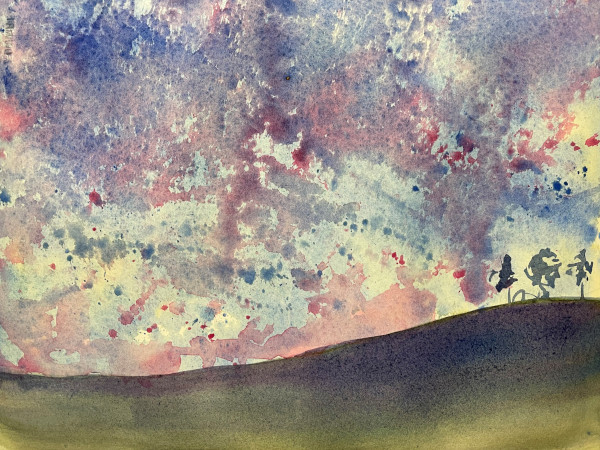Recently I joined the International Society of Experimental Artists (ISEA). This week, I was invited to join their new Facebook group, and I gratefully did so. I need to get into some trouble. Trouble shouldn’t be hard to find. Some of my personal trouble pipers are in this group too: Ruth Armitage, Liz Walker, Kimberly Santini, Ann Moore, Sue Martin, and Lynda Hoffman-Snodgrass as well as dozens of other artists who I don’t know but I am enjoying their work.
As I watch their images slide by, I have been pondering what experimental means. Some of the artists work with a single media, some work in mixed media. Some add a three dimensional element to their pieces, others enjoy a dash of extra texture. There is not a unifying theme. Some of the work is not to my personal taste, some is very attractive. Some artists work in abstract, others explore objective themes.
In short, I’ve been struck by the wide variety of what qualifies as experimental.
Yesterday, ISEA announced a scholarship opportunity. One element of applying for the scholarship was writing an essay about what experimentation means to you. They did not define experimental, but did offer the suggestion that the experimentation goes beyond your fundamental skills.
Both Friday and Saturday morning I went out birding. It was lovely, but neither trip offered great bird photos. My best shots ended up being landscapes.
I’m still suffering from a bit of overwork in “regular” life and taking on a big project sounds like too much. So, I decided to try combining these two images.
As I worked on this piece, a piece that ultimately is not successful, I again pondered experimental. I don’t do a lot of landscapes. I haven’t tried a sunrise before. And the rolling curves of the hills were a unique challenge.
As I was scrolling through my Instagram feed this morning, an admired artist named Alisha Whitman posted a video and she put the following text in it.
I have been wanting to paint this view of the valley we had from a hike to the top of a nearby butte.
But have hesitated because I don’t know how to make it work.
How silly is that?
If we waited to do something until we knew how to do it, we’d be sitting around waiting for…
Forever.
So here goes. It might be horrible. But it might be awesome. Would hate to miss out on awesome.
I would not have categorized Alisha as experimental… but aren’t all artists?
So, I went back to my idea and pondered what went wrong.
- Issue 1: Sky and land are different (no communication between them.) Why am I including both? What’s important?
- Issue 2: Sky and land are battling for focus. What am I interested in?
- Issue 3: Why is there a stripe at the bottom when everything else is organic? (Yes, I know what it’s supposed to be, I’m commenting more on it’s aloneness as a painting element.)
With these things in mind, I went back and planned out some paintings.
I am interested in the sky.
I am interested in the hills.
I am interested in color.
I am interested in shape.
I am interested in moving through the painting.
And then I went back and adjusted my original painting.
So, what do you think? Is this experimental?










I really like the way you thought through this, and I like the change you made to your painting. To me, this is what ISEA is all about. Really, really experimenting.
I love what Alisha Whiman said: “So here goes. It might be horrible. But it might be awesome. Would hate to miss out on awesome.” This is so inspiring to me!
Your painting is beautiful! So interesting hearing your thought process!